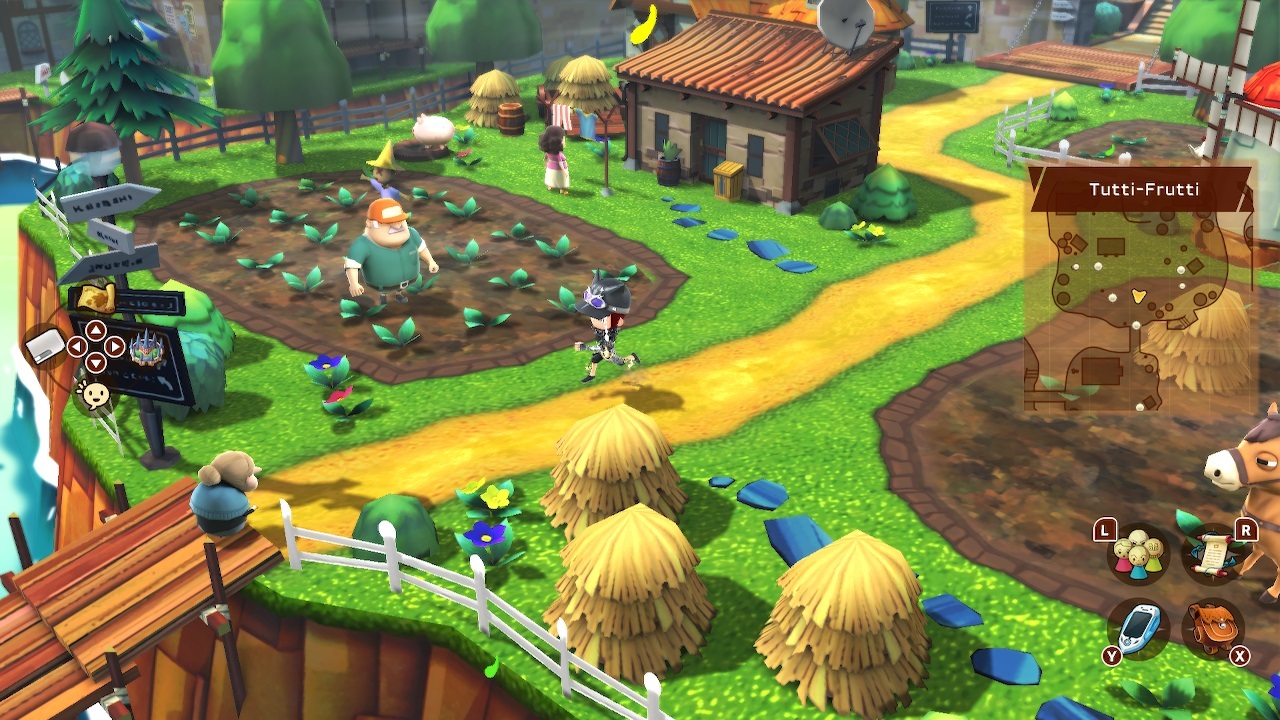From the Minestrone Mines to Gumbo Grotto, Snack World is an RPG universe entirely founded upon various types of cuisine. But although this base is admirably creative, Snack World's failings outweigh its strengths. Although it is conceptually innovative, the execution never quite lives up to ambition.
Right from the get-go, Snack World acknowledges the tropes it attempts to riff off of. You awaken as an amnesiac hero, conveniently discovered just outside the castle gates. You earn an audience with the king, who is simultaneously jovial and relentlessly selfish, and he tasks you with a variety of quests to satiate his daughter's fleeting desires--most of which she no longer cares for by the time you retrieve your boon.
Once you embark on an odyssey to regain your memory while becoming a dungeon-crawling virtuoso, you're quickly bombarded with a hefty amount of information tied to the game's various systems. Although they are relatively straightforward and conventional--character traits, codex entries, and opportunities for dungeon co-op--the explanations are buried under esoteric apps on a phone-like device called a Pix-e Pad. It's an interesting idea, but they're unnecessarily facetious, confusing nuance with jargon.

Snack World's dungeon crawling is more palatable. The environmental design of areas like the Gorgonzola Ruins, which is presided over by none other than the gorgon Medusa (spelled Madusa in Snack World), is inspired, for example; serpentine statues denote dead ends, while torches bearing green flame are arranged in puzzles that could summon either a chest or a monster once solved. Strong environmental design exists outside of dungeons too, with the game's third hub, Chowlin Temple, being impressive in terms of scale and artistry--the massive golden dragon sprouting out of the temple itself is a spectacle when you first encounter it.
However, exploration of these environments doesn't fare as well. They may look well when the game slows to a standstill, but they're stunted by awful camera angles during actual play--on one occasion you partake in an eight-person boss fight in an arena barely bigger than a fridge. Meanwhile, Snack World's dialogue and humor are the sort of thing that makes you go, "Oh, that's funny," without ever actually laughing, which is endearing in a sense but becomes groan-inducing when "virtue" is still being emboldened as the punned "virchew" 25 hours in.
Combat is clever and intuitive, though, at least early on. Snack World considers weapons, healing tonics, and utility colognes as "jaras," of which there are over 200. This allows you to create a variety of builds out of different jaras, which keeps combat fresh and fluid. Unfortunately, the AI design of your NPC companions is dodgy at best. On multiple occasions a teammate stood next to me and simply refused to revive me, despite being entirely safe to do so, triggering a quest failure and forcing me to hack my way through the dungeon all over again.
About 10 hours into the game, the UI began to fail. I could access menus, but numerical values had all but disappeared. I couldn't see weapon stats, nor the amount of a certain item I owned. As a result, I couldn't properly prepare builds for a game that is emphatically build-based. Granted, there is an option for auto-selecting a loadout that is specifically tailored towards whatever quest you're about to embark on, but, most of the enjoyment comes from experimenting with new builds.
Dungeons are further spoiled by their bosses. The majority are designed well, at least in aesthetic terms--a pair of banshee sisters known as the Bandshees are stylishly remodeled as the idolesque Godivas later in the game, while Dullardhan the Headless Hackman channels massive Bloodborne vibes. Unfortunately, many of Snack World's bosses are based on random number generation that defeating them often boils down to sheer stubbornness and sheer luck. One particular boss, Falgon, kills you in one hit with an energy blast and, once he's at about 33% HP, spams this attack like there's no tomorrow.

Snack World also requires about as much grinding as an MMO without ever much in the way of reward. The fact that level balancing is a tad confused only accentuates this--I once completed a mission marked as level 47 while only at level 36 without dying a single time, but couldn't for the life of me finish a certain level 40 mission while I was level 45. Perhaps that's down to me being better suited towards one boss than another--but, even if that's the case, Snack World still has trouble articulating difficulty.
It's almost as if Snack World's boss design was partially inspired by FromSoftware, but only in terms of emphatic inspiration as opposed to iteration or even imitation. What's worse, there is no shortcut to boss doors, nor an opportunity to save outside them--you must traverse the preceding dungeon in its entirety again, which begins to disrupt and destroy the decent dungeon-crawling. As a result, despite the fact Snack World is initially most exciting when you're exploring the depths of its dungeons, that excitement is soon painfully wrenched into tedium. This phenomenon seems to permeate Snack World in its entirety: although it's exciting and captivating early on, each of its constituents become tedious before long, and all of its strengths are weathered away by repetition and a sense of feeling incomplete.





